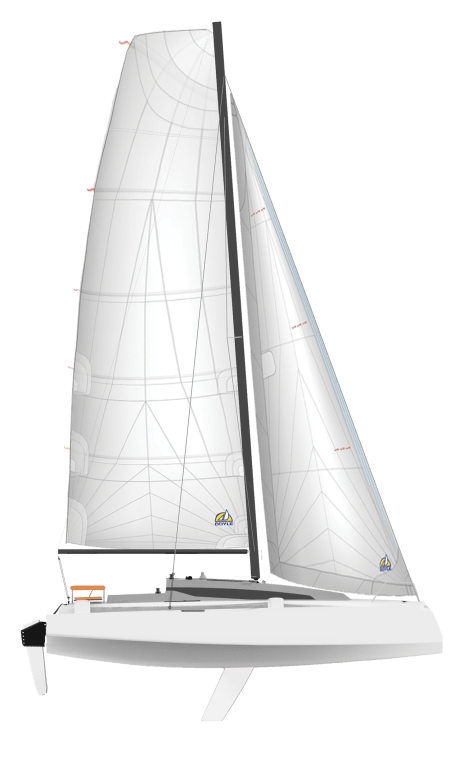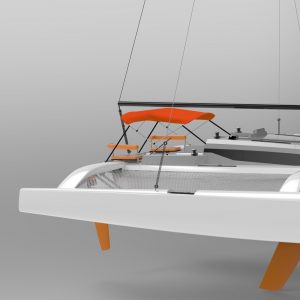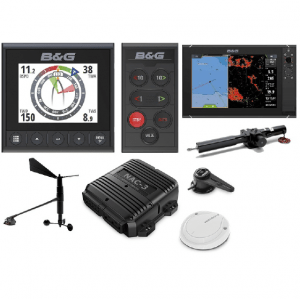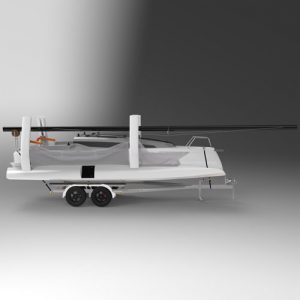CORSAIR 880 SPORT
A design from the yacht design collective, this revolutionary 29-foot trimaran offers all the possibilities of much larger boats in an easy-to-trailer lightweight package., effortlessly fast performance sailing.
The mission of the Corsair 880 is to provide sailors of all skill levels the opportunity to sail an effortlessly fast performance sailboat whilst being completely safe and comfortable.
However if your priority is to do all of that while winning, then it’s the new 880 Sport that floats your boat. This is performance for skilled sailors . Featuring a 13.5 metre carbon fibre rig, aramid laminate sails and state-of-the art sailplan, this boat boasts a power-to-weight ratio that’s class leading everywhere in the world.

Whats your poison?
Simple, comfortable, yet fast cruising… or power, speed and one hell of an adrenaline rush? The standard 880 is offered with a well balanced 51.5 sqm upwind sailplan (shown in black outline), but the Sport raises that to 62.9 sqm (shown in red) with an extended bowsprit and enhanced controls.
Something for everyone
Relaxed cruising: Helming from the protection and comfort of the padded cockpit seats on the 880 is made possible due to the low heel and stable sailing provided by high volume ama design and a huge unfolded beam.
High speed racing: A 13.5m carbon rig and laminate sails offered on the 880 Sport, combined with the impressive low-rocker hull design deliver class leading performance.
GO HARD OR GO HOME
The 880 Sport offers racers the power-to-weight ratio required to slay the competition at your next regatta. Modern ama design generates dynamic lift which not only propels the 880 Sport in the lightest of airs but also increases the stability and comfort of your ride. All of this allows you to zero-in on your next mark at 20kts whilst feeling totally calm and in control.
While completely safe and comfortable, for people of all skill levels. Featuring a protected cockpit, high-aspect hulls and foils, and a huge unfolded beam. This is a line-honours boat that’s manoeuvrable and comfortable in a crowded regatta or busy harbour.
Sailing faster than ever before
Is performance only for professionals, a real racing boat, that can cruise, a finely tuned racing machine.
Is PERFORMANCE only for professionals? With its spartan, lightweight fitout and impressive sail wardrobe this machine will fly - literally! Designed to sail with the main hull just skimming along the water, she is fast yet safe and responsive, bringing two hull flying within reach of skilled yet amateur sailors.
A real racing boat, that CAN CRUISE If your priority is to have all of the same adventures as cruisers, while also coming out a winner at your next regatta then it's the 880 SPORT that floats your boat. This boat offers serious performance for skilled sailors.
A finely tuned RACING MACHINE This boat is the finely up-tuned version of the state of the art in trimaran design. The standard version features a 12 metre carbon mast, while the SPORT features a taller 13.5 metre carbon mast, carbon laminate sails, and a lightweight fitout.


SPECIFICATIONS
Overall length, 28' 8" ft / 8.8 m, 22' 3" / 6.8 m, beam folded, 8' 2" / 2.5 m, draft d/b up, 1' 5" / 0.45 m, draft d/b down, 5' 3" / 1.6 m, mast length, 39' 4" / 12 m carbon, unladen weight, 3,659 lbs / 1,660 kg, upwind sail area, 554.3 sq ft / 51.5 m2, 44'2" / 13.5m carbon, 677 sq ft / 62.9 m2, recommended options.

C880-OPT049
This collapsible bimini / sun shade provides sun protection over the cockpit and, if optioned with the dodger can be connected together providing protection from wind waves and rain.

C880-OPT041
Yamaha outboard control.
This option provides pre installed wiring and cables for your outboard throttle control and engine start system – to suit Yamaha 9.9 – 15hp outboards (does not include engine, fuel tank or fuel hose)

C880-OPT038
Advanced navigation package.
The advanced navigation kit for your Corsair provides all the sailing and navigation essentials including 7” plotter, 4.5” multifunction display, and wind, speed and depth transducers.

C880-OPT042
Dual axle aluminum trailer.
Purpose-built lightweight aluminum trailer with dual axle, hydraulic brakers, lights and spare wheel. Built by Spitfire trailers and incorporating lightweight composite components by Corsair this trailer is the lightest option for the Corsair 880.
- Folding Corsair Trimarans: Legendary Ability, Unbeatable Reliability
- 5 Reasons Why The Corsair 760 Trimaran Won Multihull Of The Year
- Corsair Range Brochure
- Corsair Community
- Find A Dealer

Tel +84 28 3873 3630
Sales Enquiry:
Customer Service Enquiry:
© 2024 Corsair Marine International. Alls rights reserved.
Privacy Policy

IMAGES
VIDEO